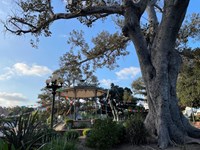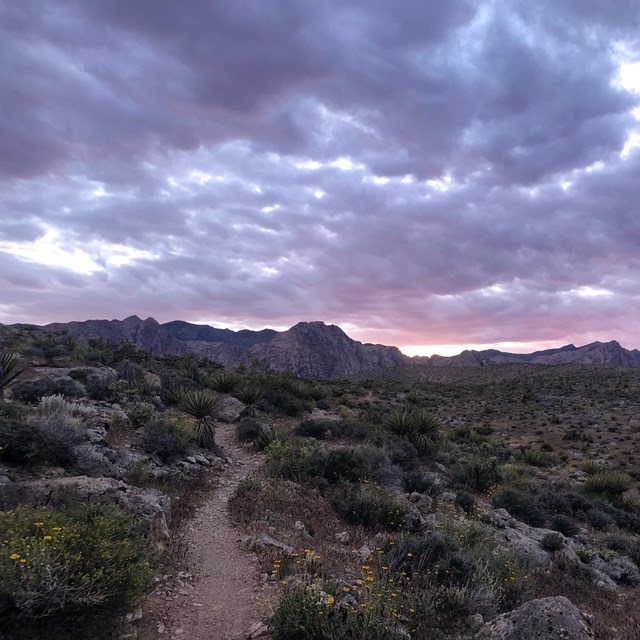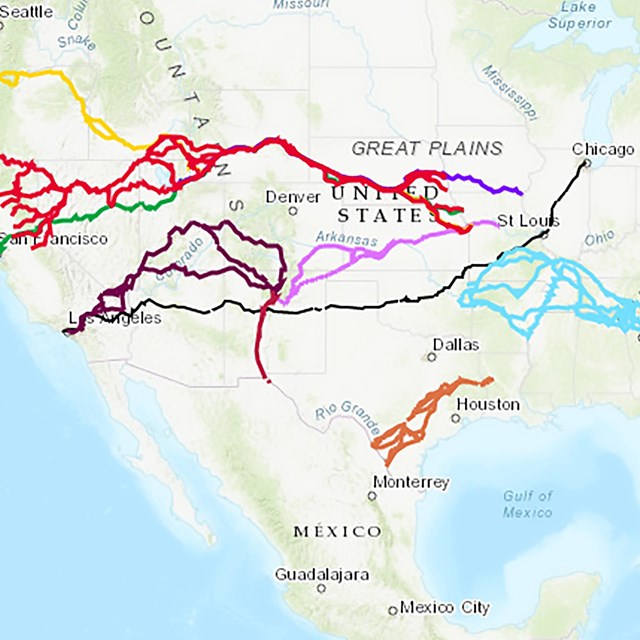Last updated: January 5, 2024
Article
Old Spanish Trail: Los Angeles Itinerary
The City of Angels is rich with Old Spanish Trail History. In an era when Santa Fe's population dwarfed that of Los Angeles, Mission San Gabriel was one of the most important population centers along the Old Spanish Trail. Antonio Armijo visited the mission in 1829, during his first trip between Abiquiú and Los Angeles. His journey connected two of the most important cities on Mexico's northern frontier.
Explore these three distinct historic sites to learn more about trail history. If you have more time, take a drive to Cajon Pass and consider a hike along the trail. If you are continuing east on your Old Spanish Trail journey, stop at Mojave National Preserve for a step back in time.
You can also learn more about these sites and their location using the interactive map for the trail.
Get more information and start planning your visit:
- Old Spanish National Historic Trail
El Pueblo de Los Angeles Historical Monument
- Old Spanish National Historic Trail
Mission San Gabriel Archangel
An important stopping point at the western end of the Old Spanish Trail, Mission San Gabriel holds the keys to understanding interactions between Europeans, Anglo Americans, and Indigenous people in the Los Angeles area.
- Old Spanish National Historic Trail
Juan Matias Sanchez Adobe
The oldest home in the Montebello area, the Juan Matias Sanchez Adobe is a testament to the impact of settlers who arrived via the Old Spanish Trail. The adobe's clearest connection to the Old Spanish Trail is through William Workman. He was co-leader of the Rowland-Workman party, a group of Anglo Americans and New Mexicans who migrated to California on the Old Spanish Trail in 1841.
- Old Spanish National Historic Trail
Cajon Pass
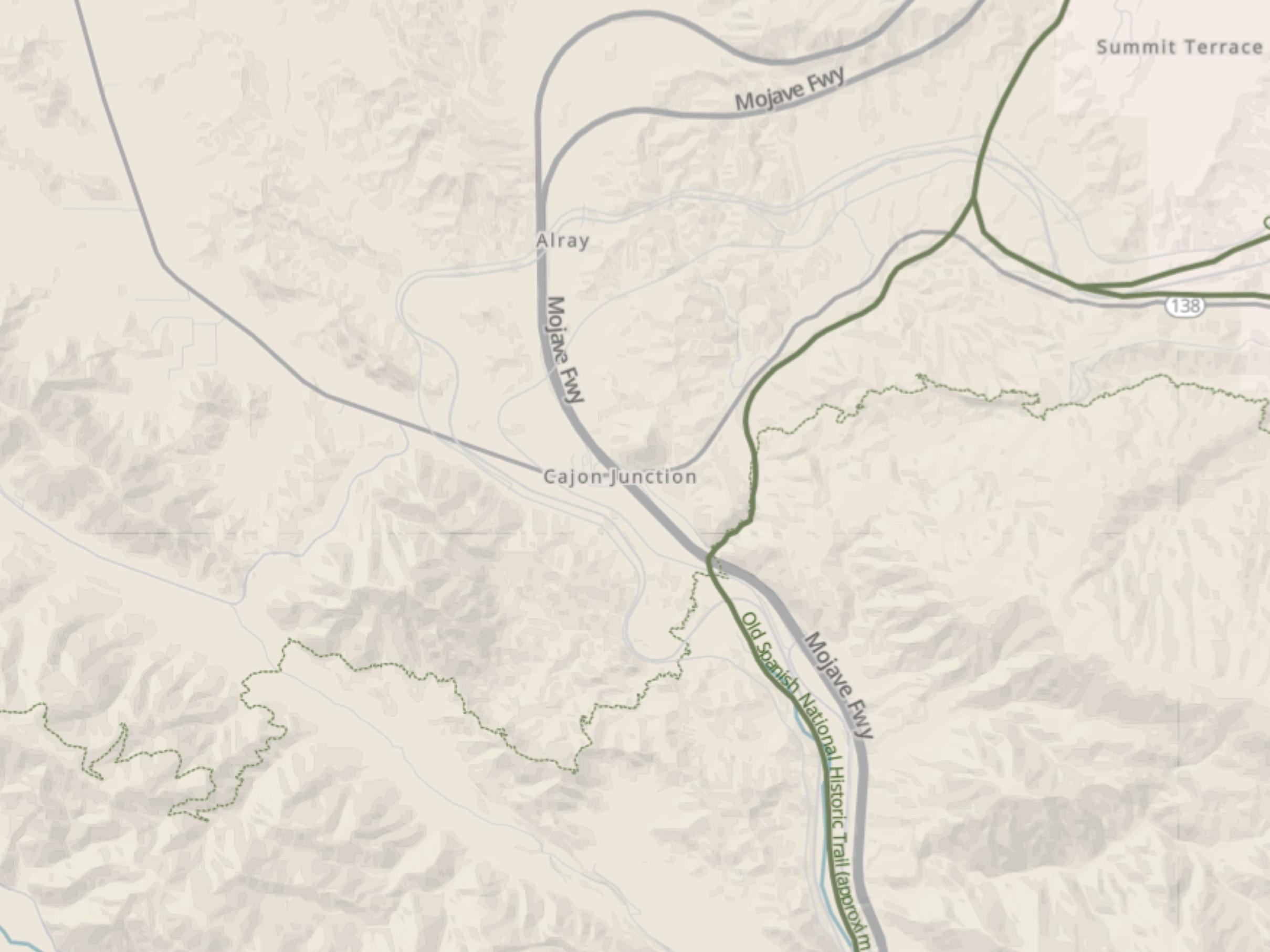
Cajon Pass is a mountain pass between the San Gabriel and San Bernardino Mountains and the route of the Old Spanish Trail. This important box canyon has been used by thousands of years as a passage from the Mojave Desert to the Los Angeles Basin. It is currently grouped with Cajon Summit to describe the area where a vital artery of the California interstate system, Interstate 15, descends into Los Angeles, after traveling east from Las Vegas.
- Old Spanish National Historic Trail
Mojave National Preserve, the Old Spanish Trail
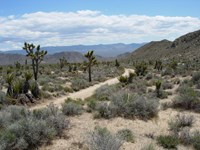
The Mojave Road, through Mojave National Preserve, is considered a branch of the Old Spanish National Historic Trail. It is listed on the National Register of Historic Places. Mojave preserves a diverse mosaic of ecological habitats and a 10,000 year history of human connection with the desert. Offering extensive opportunities to experience desert landscapes, the preserve promotes understanding and appreciation for the increasingly threatened resources of the Mojave Desert.
Are you planning a longer Old Spanish Trail road trip? Are you interested in visiting a different area?
Check out other Old Spanish Trail Trip Ideas.

